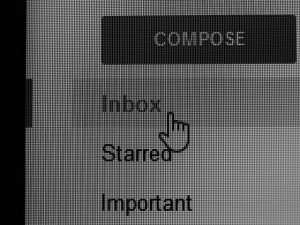Uncategorized
The First (of 3) Snooze-You-Lose Strategies That Eliminate Panic and Propel Your Dental Marketing
 If you’ve ever attended a family reunion you understand. I’ll explain.
If you’ve ever attended a family reunion you understand. I’ll explain.
At the core, it’s the same principle that connects your dental marketing to the big-picture strategy.
My dad made a statement at our most recent family reunion. I can’t get it out of my mind.
It answers the question, “Why am I here?” And I’m not talking some existential, meaning of life idea.
The essence of his statement to our gathering of nephews, nieces, cousins, spouses, children, grandchildren, and great-grandchildren defines what it means to be family.
We were circling up prior to our reunion meal. My dad (the current family patriarch) pointed to the displayed, vintage portraits of my grandmother and grandfather.
Then, tearfully gesturing to our gathering, said, “They caused all this…”
Cause and effect
Everything starts somewhere. Before a tree, family or otherwise, extends its branches, there’s a simple seed (the cause).
And your dental marketing impact (the effect) is no different.
What seeds are you planting? And going a step further, do you have a strategy that’s easy to implement?
Reacting isn’t a strategy
You’re accustomed to it. For example, as a dental provider, you react to the pain a patient presents with.
Your education, training, and experience teaches you to diagnose the situation and prescribe a treatment plan. I realize it’s a bit more complicated than that, but you get the imagery.
Reaction can grip you too when there’s a need to market your services.
- New patient scheduling is down
- Recare has stalled
- Web search analytics are showing downward traffic trends
And the dentist down the street is your community’s new rock star with their state-of-the-art…cutting-edge this or that (and if they use “state-of-the-art” or “cutting edge” to describe whatever in their latest postcard mailer or on their newly designed website, you should stop worrying…because no one cares…seriously, nothing says boring, “numbing,” marketing copy than those two phrases…but I digress).
Meanwhile, back to your challenge at hand…
Your marketing dilemma is a different cause for reaction than you’re typically educated, trained, and experienced to handle. You know when a tooth has erupted and what to do to fix it.
Now your marketing presents with pain. What to do?
A road paved with “good intentions” that leads you nowhere
Well intentioned dental professionals do what they know best to do when marketing challenges arise. Right?
You leave a Post-it® note on the desk of your office manager or designated front-office team member that reads, “See me about an email blast…” (or something related to a panic-driven “marketing” blitz).
Is that the best you can do?
Your dental marketing deserves better than a random, reactively conceived, out-of-their-depth (with all due respect reference to the person tasked) email blast. You’re panicked. I get it.
Take a deep breath.
Better…?
Now let’s assess the problem and nail down a more effective solution to your ongoing marketing dilemma.
You WILL be in panic mode again. That is, unless you readjust your perspective and realign your approach.
The first (of 3) marketing content resources you’ll ever need to build your dental practice or dental industry business (and stop burdening an already focused and busy business assistant).
1-Your Platform Content (PC)
Consider your website your office’s front door. Before a new patient or anyone else walks through the door of your dental practice they’ve probably invested a portion of their time hanging around in your digital “lobby.”
This assumes you have a website. If you don’t…well…we need to talk (and we should have that conversation, like, NOW).
Having a website is only the beginning. These days there’s more to an established, effective, useful, search friendly online presence than a mere website.
Home page-check! About us page-check! Services pages-check! Contact us page-check! Social media buttons-check!
I’ll even go so far to say Blog-check! You’d be surprised (perhaps) how few can check that one off the list these days.
And if you do have a blog page, how fresh and/or recent and useful is your content?
More on that later.
How to make your dental website a solid, home-base platform
Consider it the “cause” of your intended “effect” (to borrow from my earlier family reunion story).
If you want to avoid reactionary, panic-stricken marketing make certain your website platform is solid.
- Visit your website as if you’re searching for a dental provider. How informative is it? Do you know where to go next from page to page? Does it communicate relevant, benefit focused information (rather than “hey, look how great, equipped, educated, etc we are…”)? Are there clear calls to action page to page? Does the content ultimately lead to scheduling an appointment or consultation?
- Clean up your language. Make sure your entire site is “you” (reader/patient/client) focused. It should read as if you’re having a personal conversation with the person reading your content.
- Stop talking so much. Reduce your page word count if necessary. You should be able to inform and compel a response with 250 to 500 words per page on average.
- Keep it real. Evaluate your page header images. If your images look cookie-cutter, your site can appear that way.
You want to avoid having the reader feel like, “oh, I’ve been here before…just another dental website…” Imagine them feeling instead that your practice story, culture, and voice is different than most…and unique to yours.
Your dental marketing starts somewhere. And your website platform is the most strategic place to begin if you want to solve the panic mode problem in your marketing.
Process and act on this for now. Stay tuned…there’s more to come in an upcoming post.
2 Actions That Will Protect Your Dental Website from Being Left-Out-in-the-Rain
 My first thought was, “On a holiday at 6:30 p.m.?” But when I saw him standing there, in the rain, at the edge of my front porch, another thought occurred to me.
My first thought was, “On a holiday at 6:30 p.m.?” But when I saw him standing there, in the rain, at the edge of my front porch, another thought occurred to me.
His chosen approach has much to do with how you reach your audience via your dental website.
My soggy, evening visitor was going door to door selling the opportunity to “…have a few minutes of my time…” He wanted to talk about my home security system.
A number of thoughts raced through my mind in the brief moments I felt sorry for him standing there, on my doorstep, rain-soaked from walking door to door in my suburban neighborhood.
One thought dominated them all.
“There has to be a better way…!”
I’ve always admired door to door sales dedication. Seriously, it takes a level of perseverance (or desperation) to do it (I can relate having done my fair share of it a few years ago for a variety of reasons).
I peddled everything from products to ideas. And I gained much from the experience that serves me to this day.
That said, technology has vastly improved the “sales” relationship. Say what you will about the grass-roots, guerrilla marketing, bootstrapping diligence of the committed few who knock it out door to door.
There IS a better way. And how you’re attempting to reach your audience via your website could be the door-to-door equivalent of my soggy, holiday, dinner hour salesman.
“You had ONE job…”
Your dental website has one fundamental purpose. And depending on your specific niche it could be patient related or product/service related.
That ONE job? Compel action from your reader.
Let’s define action. And let’s bottom-line it, shall we?
For the dental practice, most often your website’s sole purpose is compelling a new patient, current patient, or referral patient to schedule an appointment. I’m not going to argue the sub-categories of appropriate purposes. Let’s keep it simple.
For the dental industry service or product business, the common driving purpose is compelling a new client, current client, or referral client to order products and services from you. Again, corollary purposes aside, let’s stick with the basics.
What gets the job done?
My soggy door to door sales-guy gets points for effort. But more important, and he knows this, it’s a numbers game.
Every “No” gets him closer to a “Yes.” It’s common sales motivation.
Is this true when it comes to your website? Does every visitor who searches for dental services, arrives on your site, and leaves with a “No” get you closer to a “Yes?”
And if that’s true do you have the time to measure it? (Understanding, of course, that you can deep dive into your site analytics and get a boat-load of relevant answers to that question.)
I choose to deal in the realm of what increases the likelihood that they’ll not only STAY but RETURN again and again.
In this instance, it’s about relevant, useful information.
And speaking of a deeper dive, allow me to clarify what “information” I’m NOT talking about.
There’s more to useful, dental website information than standard, overly technical explanations of crowns, fillings, dental hygiene, implants, etc. And there’s way more than talking about your latest, state-of-the-art, high-tech equipment. You know, the equipment you’ve just completed hours of training or CE credit for the qualification to use it on patients who you assume are laying awake at night longing for the opportunity to sit in your op-room chair to experience it.
I overstate my case. But that’s the door-to-door equivalent on many dental websites when delivering information.
“Hand that dude a towel…” (so he can dry off and throw it in).
It’s time to renew your website, the kind of information you share, and how you share it.
As I earlier observed following my dinner time sales intrusion – “There has to be a better way…”
Do this…
1-Build your authority by being a reservoir of useful information.
These days information translates into trusted expertise. Notice I added the word “trusted.”
I don’t have to tell you that a search for “dentist” in your city/region will return pages of apparent expertise. Most are trustworthy and treat their scheduled patients appropriately – you included.
How and where you rank in that search determines whether they’ll give you the opportunity to show your trustworthy treatment approach. You can pay for that ranking via Google Ads, etc. hoping they’ll discover you to be everything they’re searching for in a dental provider…and then some.
Or…
You can show up consistently as result of useful information about the treatment, service, or procedure that they’re interested in.
- Blog content, podcasts, video, and social media content relevant to your reader’s questions, problems, and concerns spotlight your authority in today’s digital media world.
- Build a list of topics from the questions your patients and people you consult with are asking.
- Create useful, easy-to-access content.
- Make the content available on your website’s blog/article page, via a podcast button (linking to a downloadable audio file or an iTunes channel), or a link to your dental practice’s YouTube channel.
2-Be consistently available with answers to the questions patients/clients are asking.
There’s more to answering questions than filtering a select few through your website’s FAQ page.
- Make your web page’s sidebar a billboard for where site visitors can get answers to their questions.
- Create compelling content titles that capture their attention (make them scream, “Read me!”) in the “Recent Posts/Articles” section.
- Show your interest in patients by making your content about them and their questions…not you and your latest technological advance, credentials, etc.
Trust translates via being attentive. Your attentiveness shows up in being useful via quality content.
Don’t get left-out-in-the-rain on your dental website. Persevere, sure.
But be certain that your diligence is, above all, useful to those you’re seeking to compel.
Where the Line Forms: How to Build Anticipation with Your Dental Blog Content
As a teen I remember standing in line alongside my dad, outside our hometown’s twin screen movie theater.
Tickets in hand.
The crowd and anticipation building.
Star Wars…enough said!
Blockbusters have a certain appeal. And that sense of anticipation works for your dental blog content like it does movies.
I recently introduced our young grandson to the Star Wars franchise. I’m building anticipation in him for the approaching release of the latest chapter in the sci-fi series.
He’s hooked. And the promotional teaser for the new film had him uttering a wide-eyed, “Wow!”
Good content – visual or otherwise – elicits an emotional response in one form or another.
What’s “Wow!” and are you getting it?
Unlike my dad and I full of anticipation years ago for the local premiere of George Lucas’ story from a “galaxy far, far away…,” I get that the general public isn’t lining up to read dental content on your website.
There are reasons for this.
The obvious ones: time and perception.
One of those you can’t control. The other you absolutely can.
Perception is everything. Start controlling it.
The first level of defenses fall the moment a potential new patient, client, or current one types in a dental search term in their web browser. Your published content goes to work on your behalf.
And this is where the current online reality shifts for you and your dental practice. The availability of relevant content increases the likelihood you’ll show up somewhere at or near the top of their search results.
Merely having a website with the words “dental,” “dentist,” etc peppered throughout just to stoke the search engine’s fire. Those days are gone.
Welcome to the new digital marketing world of usefulness (the key, by the way, to controlling perception and building anticipation).
Give them something.
If it’s written content, it must be readable, understandable, and above all, useful to their search.
Perception is that dental content is technical (much of it is).
Perception is that dental content is boring (much of it is).
Perception is that dental content is baited and weighted to lure you into the office for something “free” that will lead you into a consult room where you’re introduced to the “need” for hundreds or thousands of dollars of treatment (much of it is).
The rise of “just because” content.
Informed decisions are better than decisions made under pressure. Wouldn’t you rather have the reputation of being a trusted resource that educates people into a decision?
Become an authority. And when people trust you as an authority their perception shifts.
How to shift the perception about your dental content.
1-Launch, re-launch, revise, or revisit your dental blog strategy.
Did you give up blogging too soon? Have you delayed starting? Are there loooong gaps between your most recent post and today?
Your authority as a dental professional increases when you consistently deliver quality, useful, reader-focused information.
CE courses and credits can appear irrelevant (as a credential) for the general public. They’re looking for accessible answers to their questions.
And people are accustomed to reaching for their smart phone or tablet, opening their web browser, typing a word in the search bar…and viola!…reading something relevant to their need.
They will read. And vital to your authority, they’ll return for more if what they find leads to solutions on a physical or emotional level.
2-Keep your blog topped-off with a minimum of two fresh posts per month.
We could debate blog frequency all day. Let’s not.
Instead, set a goal to blog consistently. And by consistent, start with a fresh post every other week (minimum two per month).
Once you get in-the-zone you’ll actually find it easier to up the frequency. In fact, once a week will become your new blogging pace.
Set a goal to publish once a week as you complete a month or two of every other week publishing. Block out some time. Maintain a running list of topics and content ideas.
And if your time is limited or your desire to write is low (as I suspect both to be true since you’re a busy, thriving dental professional who’d rather be doing dentistry) secure the services of a dental copywriter or dental blogger to produce your blog content on a consistent weekly, bi-weekly, or monthly schedule.
3-Listen, learn, and leverage what you discover into new posts.
Be intentional about publishing content that people will read and return for more. And your best intentional strategy is listening.
What are your patients, clients, readers asking about? Talking about?
Ask your dental hygienists what they’re hearing from patients. They’re on the front-lines of patient communication.
Train them, your dental assistants, and front-office team to ask fruitful questions. You’re seeking information you can turn into informational content.
When you do this effectively, patients will get the idea that you’re tapped into their concerns, fears, health and appearance goals, etc. When they feel listened to and heard, they’ll naturally share your content with others.
And shared content equals referrals. And referrals help build your practice.
If you want people to be wide-eyed with anticipation – the “Wow!” – build anticipation through your informative, useful content.
They may not line up. But they’ll know where the line forms when the time comes.
3 Insights That Protect You from Being One-of-Those Dental Emailers

You know “that person you don’t want to receive email from…?” It’s the eye-roll inducing marketing cousin of Cecily Strong’s SNL (Saturday Night Live) sketch, “the girl you wish you hadn’t started a conversation with…” character.
A friend and colleague of mine received one of THOSE emails. And the take-aways are beneficial if you want to avoid being “the dental emailer whose list you wish you hadn’t added your name to.”
I could make this short and sweet by saying the fix is easy. “Unsubscribe!”
You and your readers have more power than you realize. So, you should think long and hard about the content you send (more on that in a moment).
Something amazed me when I worked at a dental practice. Patients would often whine about the email we sent about this or that.
They would often invest more time voicing their dissatisfaction for whatever reason than reading, deleting, or perish the thought, unsubscribing.
As Zig Ziglar would say, “Some people are born in the objective case in the kick-a-tive mood.” Translation: they’ll whine about anything.
Yet do they have a valid point when it comes to the email you send that invades their space (permission granted, of course)? And are you giving them a reason not to boot you to the curb via a quick click of the unsubscribe link?
Consider my friend and colleague’s experience your wake up call!
Here’s the subject line of the email she received:
“Hey, [FIRSTNAME], what’s wrong with your blog?”
I’m not kidding, that’s it.
First, the subject line is an attempt at being “cute.”
It typically doesn’t work because we’re accustomed to it…like we are hype.
When hype leads the way. I’m out and so are most readers.
I avoid people who come off this way. And I certainly don’t waste my time reading emails or any marketing resources that start a conversation with such a tone.
Which brings me to my second point.
It’s an attempt at being conversational, but it misses a vital element of that process.
I could say that to my friend/colleague in a subject line to her without question. Why?
We have a relationship. And that’s my point.
Evaluate the relational quality of your list.
- Are you chummy? (Can you talk about anything relevant with them?)
- Do they enjoy hearing from you?
- Did they ask to hear from you?
- Does the information or conversation you share with them help them with something they need?
And this is HUGE…
- Can you continue the conversation via email at any time, about any subject, and they look forward to hearing what you have to say?
Before you even get a second chance, you must understand this.
The content of your email communications are irrelevant if you haven’t earned the right to be heard.
I subscribe to a number of email lists. Confession time: I don’t read all of them.
In fact, since we’re cleaning the slate here – I occasionally delete some of them without even opening them.
The point?
Timing matters.
Not all email subjects – even from trusted, valued sources – hit my hot-button on a given day. You won’t always bat a thousand when you send an email to your list.
But you increase your batting average when they find your content helpful and useful more than they find it hype-ful (how’s that for a word?).
Assure that your email communications to your dental patient, client, or house-list are helpful not hype-ful!
- Share an oral health trend instead of the latest triple-your-savings offer of the month.
- Lead with a benefit – something that improves their life, health, etc.
- Be generous with information that serves them with no-strings-attached (e.g. “Like” our Facebook page to enter our contest, Refer a friend or family member for 10% off your next treatment, etc). Email your list just-because without an “angle.”
Trust still translates via email.
Scammers, spammers, and hyped up marketers have peed-in-the-pool long enough. It’s time to take back the valuable online territory they’ve fouled up.
It should go without saying that you’re trustworthy. And your email content is simply another way your character shines.
Patients, clients, and those you do business with will actually anticipate seeing you in their inbox if you’re a source of useful, beneficial content.
And these days it’s really about the information.
Profit follows trust.
3 Dental Email Marketing Strategies to End Inbox Overwhelm

Creative Commons
“Email is where keystrokes go to die.”
Wait! Don’t send email to the bottom of your dental marketing strategies.
But before you send another email it would help to understand the value of your efforts.
James Clear wrote about Microsoft employee and productivity expert, Scott Hanselman’s jolting perspective.
“Email is where keystrokes go to die. You have a finite number of keystrokes left in your hands before you die.”
It makes sense that you should value your energy. Yet what if you evaluated each word you type?
- Would it change what you wrote in your most recent email message to your list?
- Could you use those same keystrokes to create a message or blog post that will help your readers rather than potentially repel them with another in-office special?
A simple fly-over of your own email inbox will quickly remind you of how overwhelming content can become. It’s no surprise that you wonder –
“How do I get the most return from the emails I send to my practice, house, or business list?”
That’s a good question. And there’s a one word tweak I’d offer to shift your perspective slightly.
This slight shift in perspective could be the difference in the effectiveness of your email marketing strategies. It’s all about valuing your ability to influence people for the good you want to deliver.
After all, you’re a professional. Whether you provide dental services that transform someone’s health and appearance or you provide products and services that enable dental professionals to accomplish those goals – you have something to offer.
So…here’s the shift in focus I earlier mentioned…ready?
Every marketing strategy you use (email included)
is about the “give”rather than the “get.”
It’s a valid question to ask – “How do I get the most return…”
I’m in business just like you are. I have a finite amount of time (and keystrokes) to share my expertise with the world. So getting the job done is alright by me.
These days – and here’s the deal – it’s to your advantage to give something to get something. Patients, buyers, shoppers, clients (whoever we’re talking about) are over the whole in-your-face, hyped-up sales approaches.
Make Your Keystrokes Matter by Ending Email Marketing Overwhelm
1-Email is only as effective as your intention.
Amazing thing about your senses. Especially your sense of smell.
Isn’t it interesting how you can sniff someone’s intentions. This happens with marketing all the time.
A subject line can reveal a lot about the sender’s desired result. There’s been much debate about whether you should veil your intentions or cut to the chase.
The answer depends on your relationship with your recipient(s).
For example, if you’re accustomed to a bottom-line sales message, it won’t surprise you when a subject line introduces a can’t-miss offer. If you’ve purchased from them before and you’ve benefited from their product or service it’s no issue to you.
But if you’re not on that level yet…well…you feel the turn-off. Am I right?
Think about the email communications you’re sending.
Are they worded as if the reader is a satisfied user, patient, client, customer that you’ve established a trusted relationship with?
Or…
Are they filled with numbing, pitchy content that makes the reader feel like a list number minus any real connection with you?
Check your intentions at-the-cursor. Value the relationship you have with the reader first, and in many instances, long before you value their dollars.
2-Email is engaging when it connects emotionally first and economically last.
People put their money where their heart is. That’s not a trite take-off on a common idea.
This is one of the fundamental rules of selling –
“People buy things for emotional not rational reasons.”
These days it’s more about engaging than selling. I know…I know you’re tired of hearing about engagement.
Engagement this. Engagement that. I get it.
But don’t dismiss this trendy word before you realize its intrinsic worth to your email marketing.
If you want to connect with people, get their attention. And once you have it, respect it.
Don’t dumb-down or numb-down your connection with overkill on promotional hype.
Give your readers something that sticks with them from the first keystrokes you make.
- Tell a story in the first paragraph (the lead).
- Connect the story to their problem (the body copy).
- Reveal the solution via your service/product story to their problem (the close).
And don’t forget the all-important element…
- Compel them to open and read (engage with) your email content by crafting a short, catchy (not too cute or hypey), benefit-focused subject line.
3-Email energizes your reader when it does two things:
When it’s useful – avoid short-changing or duping your reader list. Give them something they can use every time you email them.
If you’re promoting a service or product connect that to a problem they have. Make your service/product the useful benefit to solve a common problem even if they don’t schedule an appointment or purchase the product/service.
Share links to other relevant content via colleagues’ or industry leader’s blog, YouTube channel, Podcasts, etc.
Give bonus paybacks just for reading your email – add them to an exclusive group for your next promotion (before the general public), allow them priority access to a specific treatment, service, or product feature.
When it enhances communication – remember, connect before you ask for something.
Take time (via an email or two…or three) before you invite them to do something. This reveals that you value them more than what they do for you.
Ask relevant questions to understand how you can help them via your services, products, etc.
Create new email content around answers to those questions (talk about maximizing the value of your “keystrokes”).
Ask before you tell or offer. Communication works better that way.
Make your words matter – every single keystroke.
Coming Soon!
Check back soon…for practical, dental marketing content to help you increase your dental industry profit!

